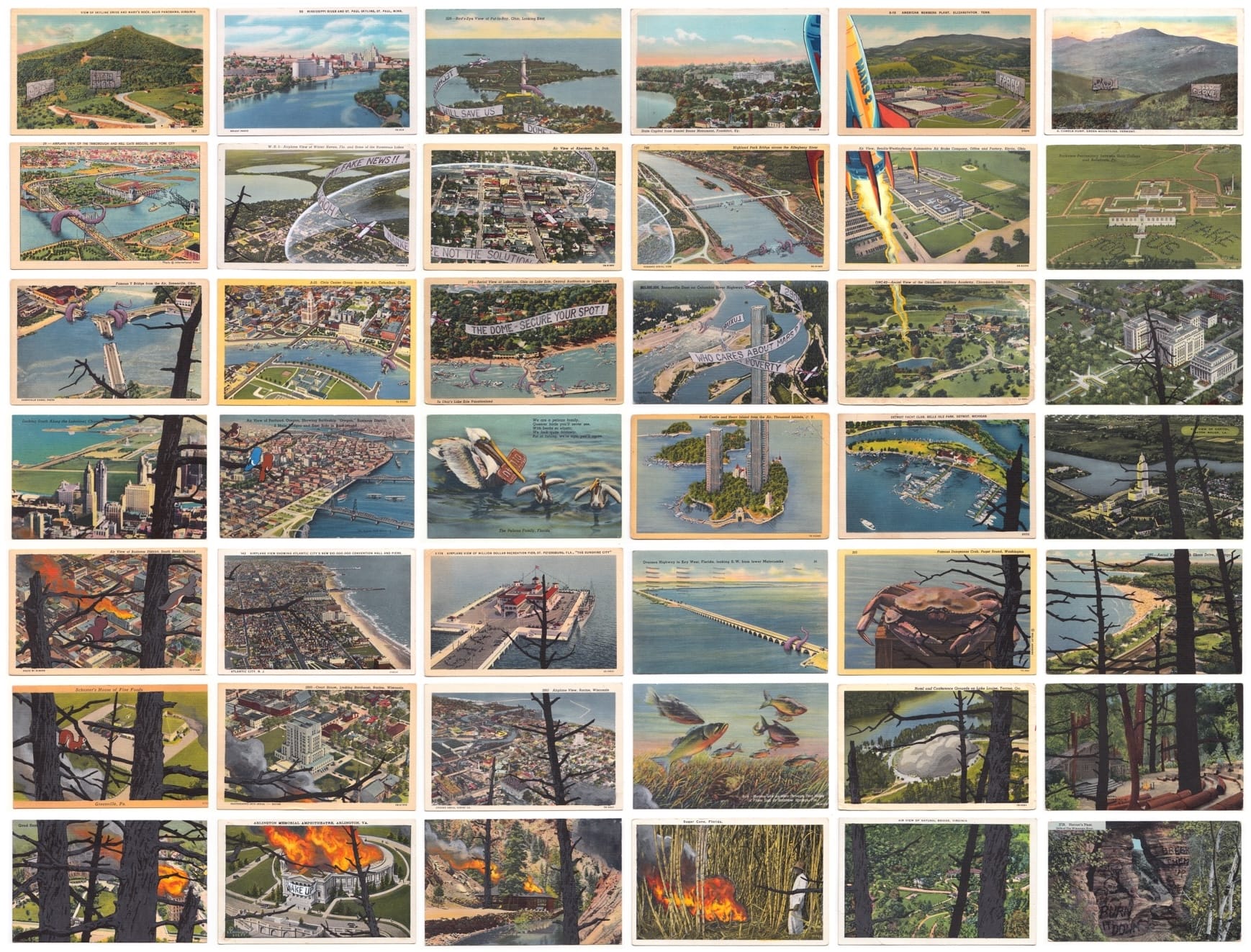This post was originally published on Colossal
The first known postcard printed as a souvenir can be traced to Vienna in 1871, followed by commemorative cards for famous events like the completion of the Eiffel Tower in 1889 and the Chicago World’s Fair in 1893. It wasn’t long before a fashion for picture postcards took the U.S. by storm throughout the first half of the 20th century.
For David Opdyke, the iconic correspondences form the groundwork for an artistic practice examining capitalism, globalization, consumerism, and our fraught and increasingly disconnected relationship with the environment. Occasionally darkly humorous yet steeped in a sense of foreboding, his uncanny scenes suggest what kind of world we might live in we do nothing to stem the mounting climate crisis.

Opdyke summons idyllic coastlines, national parks, government monuments, wildlife, and civic infrastructure to weave “fractured yet cohesive topographies,” says Cristin Tierney Gallery, which is presenting the artist’s current solo exhibition, Waiting for the Future.
For nearly a decade, Opdyke has invoked the nostalgia of landscape postcards to interrogate the climate emergency within the context of American politics and geographies. “Through these carefully altered compositions, Opdyke merges the past and the future, presenting both urgent and inevitable visions of environmental upheaval,” the gallery says.
The artist often uses antique cards that he purchases on eBay, painting scenes of environmental disasters or discordances between nature and architecture. Alternating between cartoons and life-like portrayals of trees, animals, fires, and structures, his compositions range from single cards to wall-spanning assemblages, his gouache-painted details spreading from frame to frame.
In “Overlook,” for example, giant tentacles destroy bridges, rising sea water threatens cities, and huge fires rage in institutional buildings. A dome encloses a metropolis, a rocket named Mars 2 heads for a new home in the solar system, and an airplane banner advertises “Technology Will Save Us” in a bleak yet not unimaginable reality fueled by techno-utopianism.

In his large-scale “Enough of Nature,” Opdyke transforms natural landscapes into encampment sites for those displaced from their homes, and portions of the overall composition appear to dislodge from the main grid as if floating away.
Caught tenuously between outmoded industrial practices, shifting societal value systems, and a rapidly evolving climate crisis, Opdyke’s pieces point to once-idealized symbols of American progress to stress the dangers of ignoring our own impact on the environment.
Waiting for the Future underscores the precariousness of complacency, a “cautionary tale,” the gallery says, laying bare the fragility of our constructed environment.
The show continues through April 26 in New York City. Find more on the artist’s website.









Do stories and artists like this matter to you? Become a Colossal Member today and support independent arts publishing for as little as $7 per month. The article Vintage Postcard Paintings by David Opdyke Demonstrate an Ecological Future in Peril appeared first on Colossal.





0 Comments